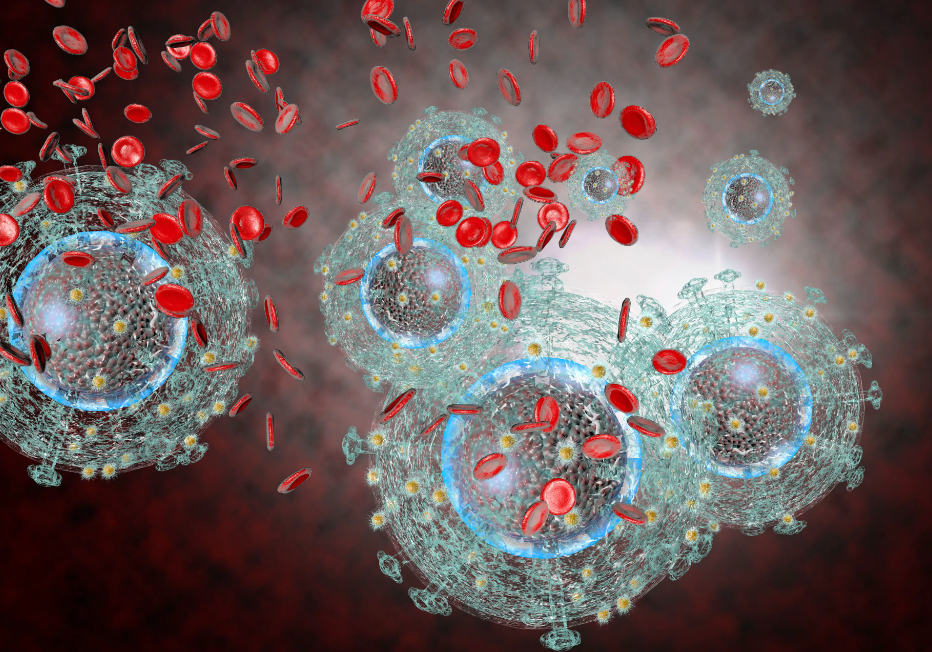Article
5-Year Follow-Up Studies Support B/F/TAF Regimen As Long-lasting, Effective Treatment for Patients With HIV-1
Author(s):
Bictegravir/emtricitabine/ tenofovir alafenamide tablets (B/F/TAF) provides long-term virologic suppression for nearly 100% of patients.
Once-daily bictegravir/emtricitabine/tenofovir alafenamide tablets (B/F/TAF; Biktarvy, Gilead) continues to be a durable and safe long-term treatment for human immunodeficiency virus 1 (HIV-1), according to authors who published the results of 5-year cumulative data in eClinicalMedicine. At the 5-year follow-up, B/F/TAF produced viral suppression (HIV-1 RNA <50 copies/mL) in 98.6% of patients, without a single incident of drug resistance reported.
Ezume Images - stock.adobe.com

“B/F/TAF is the most widely used first-line HIV treatment in the United States right now, and [it’s] included in all major HIV treatment guidelines,” said Paul E. Sax, MD, clinical director of the Division of Infectious Diseases at Brigham and Women's Hospital and professor of medicine at Harvard Medical School, in an interview with Pharmacy Times. “People with HIV and their clinicians can be reassured that there is no diminution of efficacy or tolerability of this treatment over time.”
The Department of Health and Human Services, International Antiviral Society-USA, and European Acquired Immunodeficiency Syndrome Clinical Society all recommend using integrase strand transfer inhibitors (INSTIs) in initial antiretroviral therapy for HIV-1; INSTIs include bictegravir (B) and dolutegravir (DTG). But retroviral therapies cannot completely cure HIV, which is why long-term studies must continually assess safety and efficacy.
Investigators established safety and efficacy of B/F/TAF as initial therapy for HIV in 2 randomized, double-blind, active-controlled phase 3 studies, which enrolled adults with HIV-1 RNA viral levels at 500 copies/mL or higher who have had no prior treatment.
Study 1 (GS-US-380-1489) compared B/F/TAF (50/200/25 mg) to guideline-recommended DTG/abacavir/lamivudine (Triumeq, ViiV; DTG/ABC/3TC; 50/600/300mg), and study 2 (GS-US-380-1490) compared B/F/TAF to DTG plus F/TAF (50 mg plus 200 mg/25 mg) for 144 weeks. After this assessment period, patients had the opportunity to switch to an unblinded open-label study for an additional 96 weeks, with 240 total weeks of follow-up.
The primary outcome of both trials was noninferiority of B/F/TAF compared to DTG-based treatment for the proportion of people with virologic suppression at Week 48. Secondary outcomes at 240 weeks included percentage of participants with available data with virologic suppression; change in CD4+ cell count from baseline; and percentage of participants with virologic response based on initial CD4+ levels.
At 144 weeks, the results showed that B/F/TAF was non-inferior to both DTG-based treatment regimens. In addition, mean CD4+ count significantly improved from baseline with B/F/TAF.
While almost all participants had virologic suppression by the 5 year follow-up point, most achieved it by Week 8. Only 1.4% of patients on the regimen experienced virologic failure, and less than 1% of patients discontinuing treatment because of adverse events.
Study 1489 also evaluated percent change in hip and lumbar spine bone mineral density and renal safety. While tenofovir disoproxil fumarate (Viread; Gilead Sciences) is associated with renal toxicity and loss of bone density, TAF in B/F/TAF is a safer long-term substitute with little effects of renal or bone toxicity. Generally, no new safety signals were observed with B/F/TAF.
B/F/TAF is suggested to be as effective in real-world studies as it is in the current clinical studies. Further, the 96-week extension reported similar efficacy, safety, and tolerability outcomes as were reported in the blinded phase, including efficacy for patients who began treatment with high viral load and/or low CD4+ count at baseline.
Investigators are currently set to evaluate long-term safety data of study participants who had switched from DTG-based regimens to B/F/TAF; the results were already presented at the Glasgow HIV meeting in 2022, and they are preparing a manuscript that discusses the same data, according to Sax.
Reference
Sax P, Arribas J, Orkin C, et al. Bictegravir/emtricitabine/tenofovir alafenamide as initial treatment for HIV-1: five-year follow-up from two randomized trials. May 2023. Doi: 10.1016/j.eclinm.2023.101991






